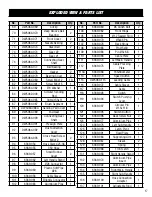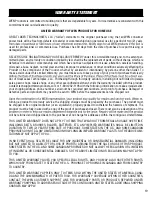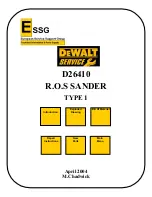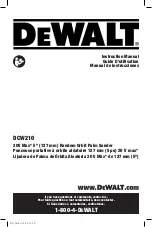
MAINTENANCE
CLEANING AND MAINTAINING YOUR DRYWALL SANDER
Clean the unit immediately after using it. Regularly clean the unit with a damp cloth and a little soft soap. Do not use
cleaners or solvents as they will attack the plastic of the unit. Make sure water does not get into the unit.
Your drywall sander requires no additional lubrication or maintenance. Always store your sander in a dry place away
from children.
If the supply cord is damaged, it must be replaced by the manufacturer or a similarly qualified technician. DO NOT
USE A DAMAGED TOOL. If excessive sparking occurs, have the carbon brushes checked by a qualified electrician.
Only a qualified technician should change the carbon brushes.
REPLACING THE SANDING PAD
1. Detach the sanding disc from the sanding pad.
For the triangular sanding pad:
2. Unscrew the three screws (Fig. 8 - 1) located on the
outer corners of the sanding pad and the three screws
(Fig. 8 - 2) on the flange. Replace the pad with an identi-
cal part suited for this particular model of drywall sander.
Attach firmly in place with the screws.
For the round sanding pad:
2. Insert the hex wrench into the hexagonal screw (Fig.
9 - 1) located in the center of the hook and loop sand-
ing pad. Hold the pad firmly while turning the wrench to
unscrew the center hex screw. Replace the pad with an
identical part suited for this particular model of drywall
sander. Attach firmly in place using the hexagonal screw.
Fig. 8
1
1
1
2
1
13
Fig. 9






































